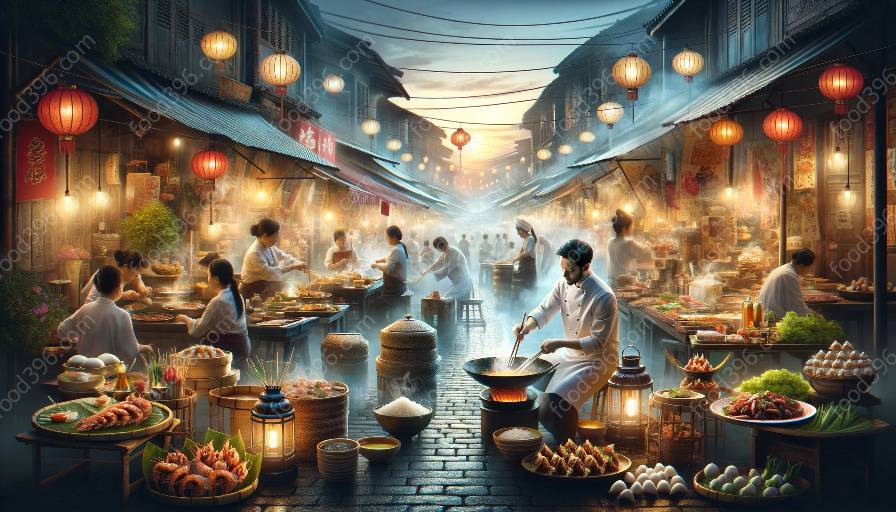Singaporean cuisine is a vibrant tapestry of flavors and influences that reflects the rich cultural heritage of the island nation. From the earliest migrants to the modern fusion dishes, the history of Singaporean cuisine is a captivating journey that intertwines with the broader history of Asian cuisine.
The Origins of Singaporean Cuisine
The history of Singaporean cuisine can be traced back to ancient times when the island was a bustling hub for maritime trade. The diverse influx of people from China, India, Malaysia, Indonesia, and other parts of the world brought with them their culinary traditions, ingredients, and cooking techniques, laying the foundation for the multi-ethnic cuisine that defines Singapore today.
Early Influences
One of the earliest influences on Singaporean cuisine comes from the Malays, who were the indigenous inhabitants of the region. Their traditional culinary practices, such as the use of aromatic herbs and spices in dishes like laksa and rendang, continue to be prominent in Singaporean cuisine.
Chinese immigrants also played a significant role in shaping the culinary landscape of Singapore. The Hokkien, Teochew, Cantonese, and Hainanese communities brought their culinary expertise, leading to the introduction of popular dishes like hainanese chicken rice and char kway teow.
Indian influences are evident in the rich and flavorful dishes of Singaporean cuisine, particularly in the form of roti prata, curry, and fish head curry, which have become staples in the local food scene.
Melding of Cultures
As the various communities settled and intermingled, a process of cultural exchange and fusion took place, giving rise to a unique blend of flavors and culinary techniques. This amalgamation of traditions resulted in the creation of iconic dishes such as chilli crab, hokkien mee, and satay, which have come to symbolize the diversity and vibrancy of Singaporean cuisine.
Colonial Influence
The colonial period in Singapore's history also left an indelible mark on its cuisine. British colonial rule brought about the introduction of new ingredients and cooking styles, leading to the evolution of dishes like fish and chips and curry puffs that are now part of the local culinary fabric.
Modern Innovations
In recent decades, Singaporean cuisine has continued to evolve, embracing modern trends and innovations while staying true to its cultural roots. The city-state's vibrant food scene has seen the emergence of cutting-edge restaurants, hawker stalls, and food markets that showcase the rich tapestry of flavors and culinary ingenuity.
Global Recognition
Singaporean cuisine has garnered international acclaim, with its hawker culture being recognized by UNESCO as an intangible cultural heritage of humanity. This acknowledgment not only celebrates the culinary traditions of Singapore but also acknowledges the significance of hawker food in shaping the social fabric of the nation.
Celebrating Diversity
More than just a gastronomic experience, Singaporean cuisine embodies the spirit of multiculturalism and inclusivity. It serves as a testament to the harmonious coexistence of different ethnicities and the celebration of cultural diversity through the universal language of food.

